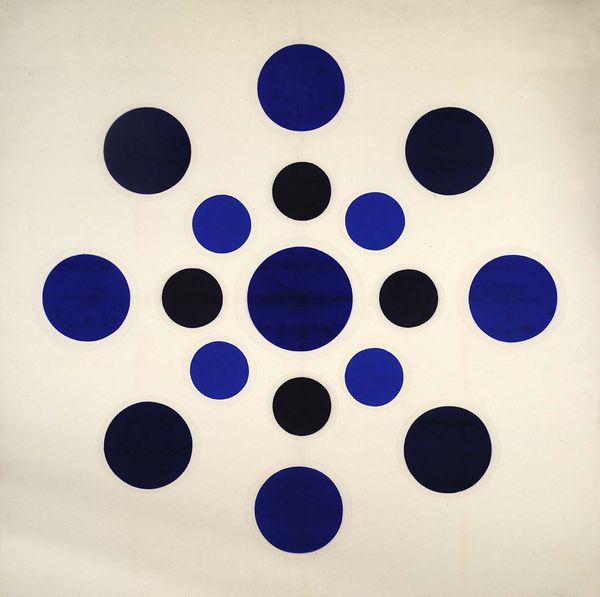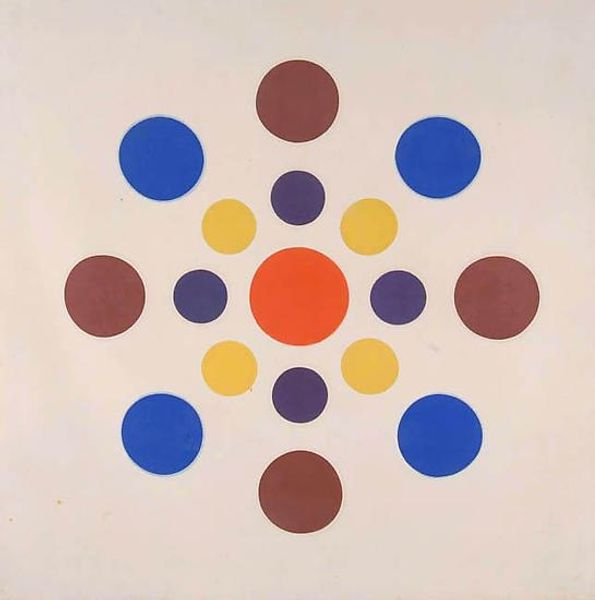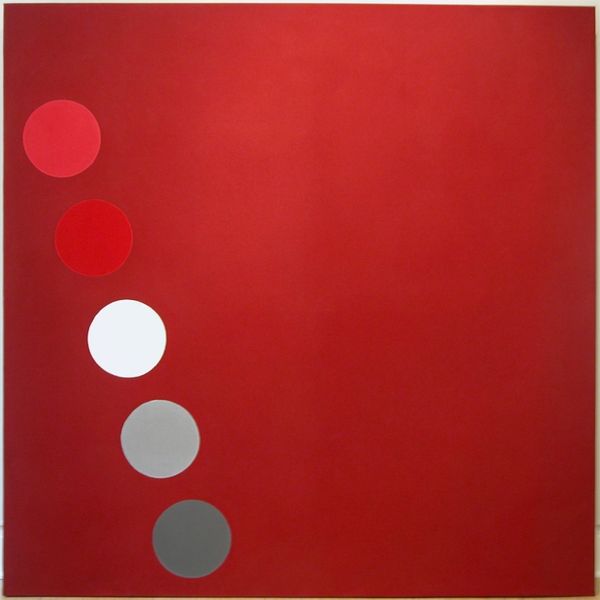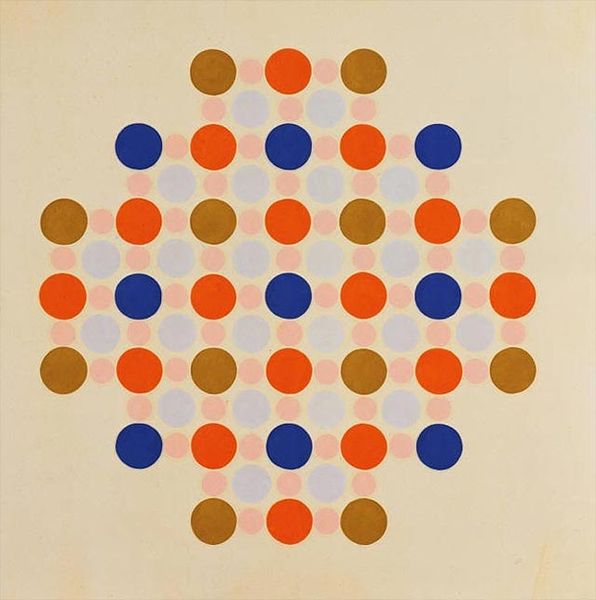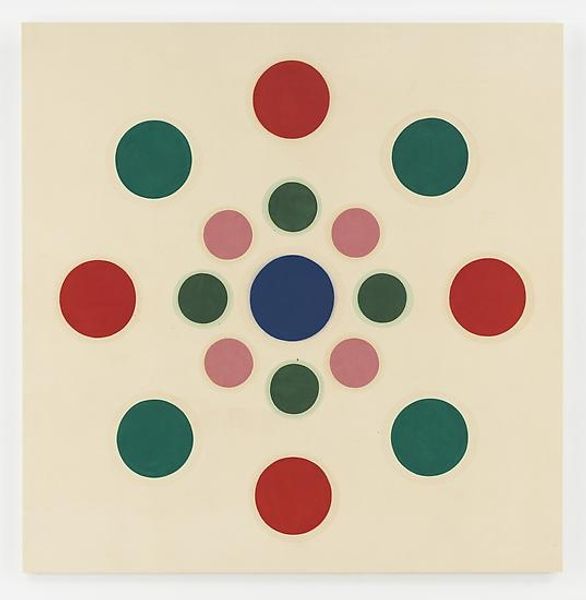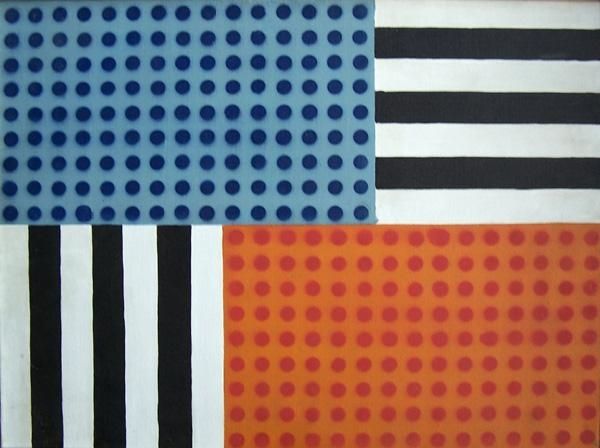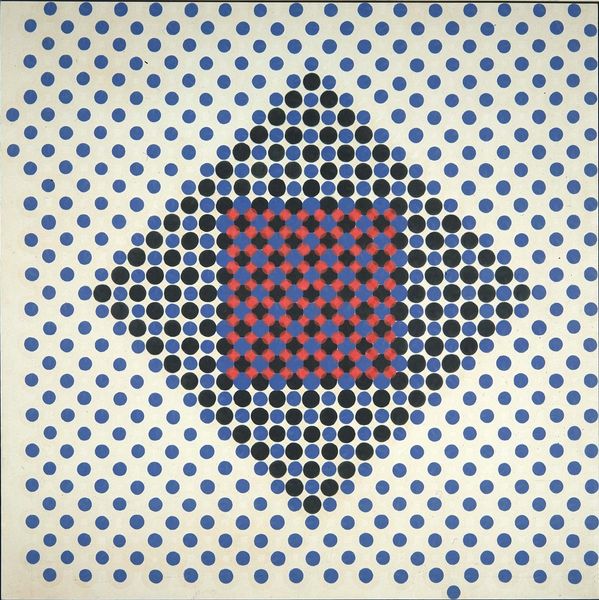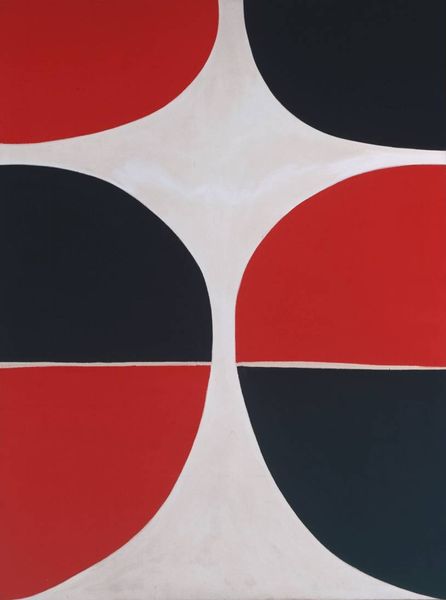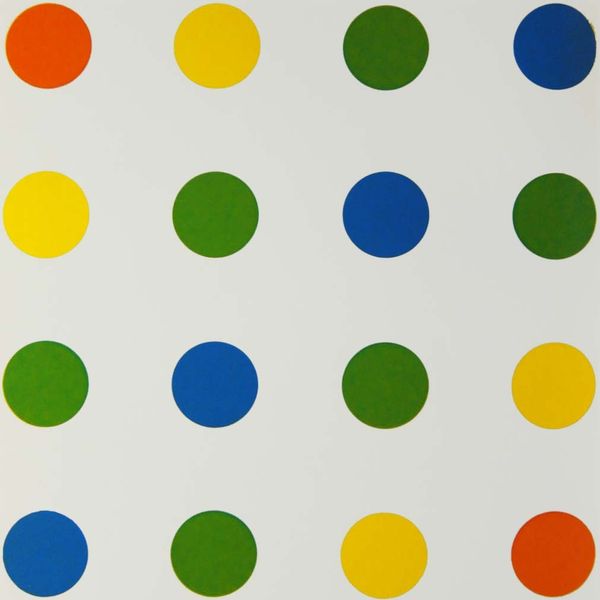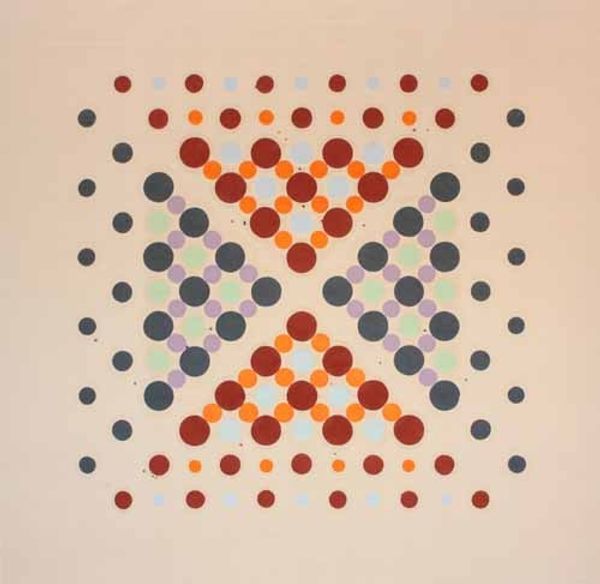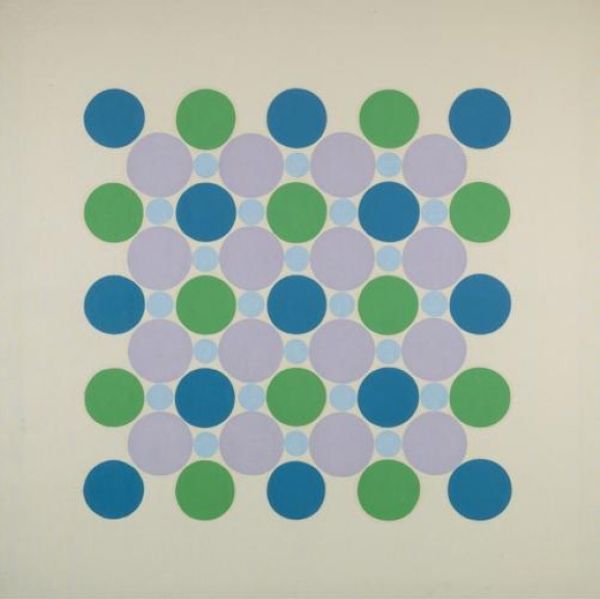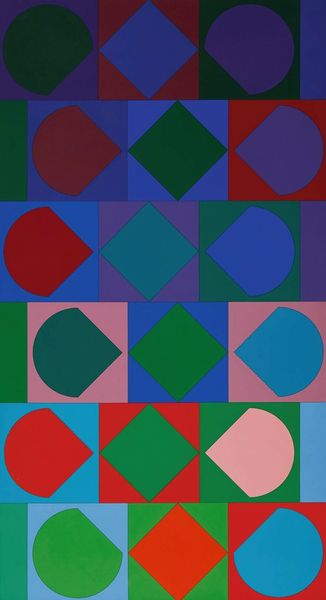
painting, acrylic-paint
#
abstract-expressionism
#
painting
#
circle
#
pattern
#
repetition of white
#
acrylic-paint
#
geometric
#
abstraction
Copyright: Thomas Downing,Fair Use
Curator: Here we have "Red Plum," a work created in 1961 by Thomas Downing. It’s an acrylic painting that features a striking arrangement of colorful circles. What’s your immediate take? Editor: It feels surprisingly light. The geometric composition, against the off-white, breathes. I’m drawn to the almost playful distribution of the circles—it creates a sense of dynamic visual harmony. Curator: Downing was working within the abstract expressionist movement, though moving towards something of a cool abstraction, less reliant on gesture. His works can be viewed within a period where color field painting gained traction. It encouraged removing narrative, and favoring simple, unified, planar visual space and experience. Editor: Yes, the planar surface is so dominant, there’s hardly any depth at all. What strikes me, however, is the near imperfection in the execution. Look closely; these circles aren't mechanically precise. Is that intentional? Curator: Very possibly! While the abstract expressionists turned away from figuration, the movement continued its own story through gallery representation and critical assessment. By 1961, the aesthetics that were initially celebrated in the avant-garde scene now circulated within well-established museum and gallery circles. Downing’s exploration with slightly less polished geometric figures pushes abstraction away from total homogeneity. Editor: It certainly resists total sterility. There is a subtle organic feeling that emanates from it, enhanced by the carefully distributed colors, a mixture of reds, blues and dark tones that really invites contemplation. I'm also wondering about that title, "Red Plum"... it introduces a symbolic element, almost suggesting an opening, but is this not incongruous to the formalist qualities? Curator: Well, abstraction during the Cold War carried certain connotations of freedom, pushing the boundaries of artistic representation amidst a context of constrained expression, and of cultural prestige. An artist might invoke such natural elements even in a completely abstracted work. Editor: Intriguing. The political interpretations undoubtedly deepen the reading. But ultimately, Downing's composition and command of acrylic allows an engaging balance of rhythm, color, and form to stand alone. Curator: Indeed. "Red Plum" stands as a great example of Downing’s style—reflective of the period’s artistic tensions and the expanding horizons of abstraction.
Comments
No comments
Be the first to comment and join the conversation on the ultimate creative platform.
